Why Billy Bragg and Red Wedge failed to make Labour rock
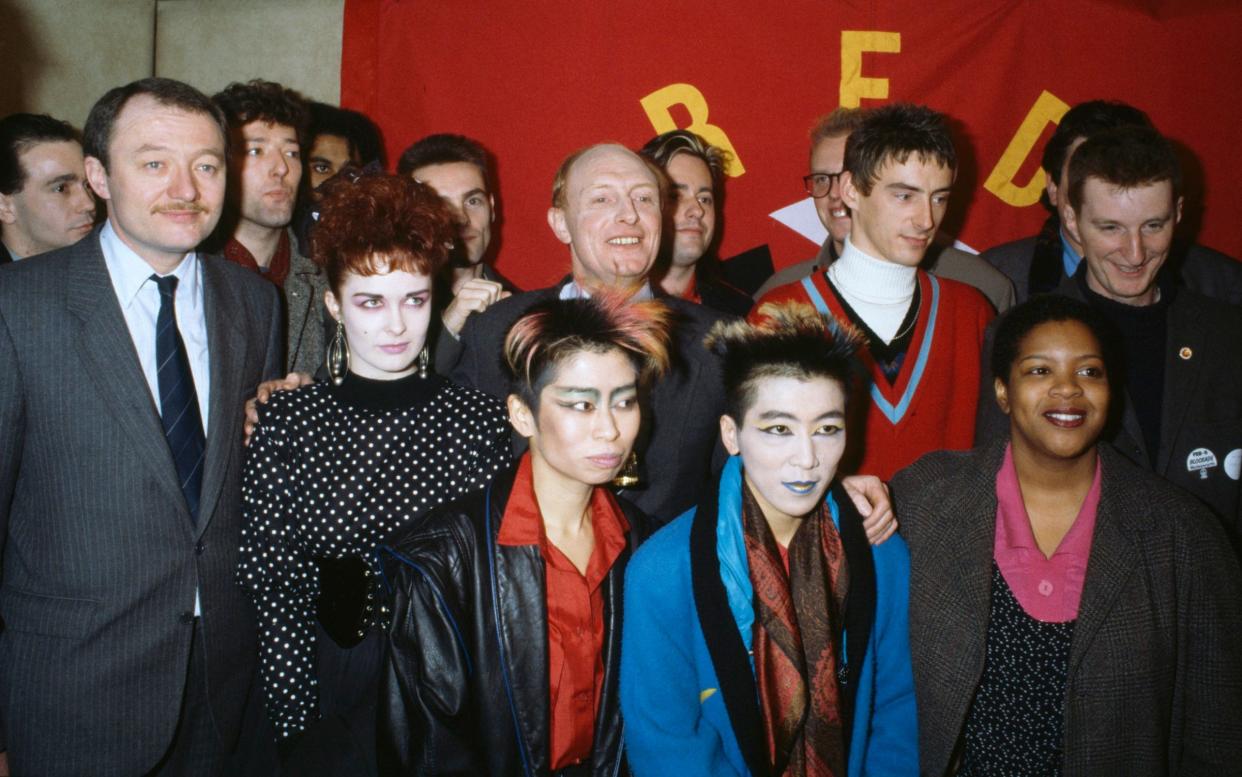
- Oops!Something went wrong.Please try again later.
- Oops!Something went wrong.Please try again later.
- Oops!Something went wrong.Please try again later.
- Oops!Something went wrong.Please try again later.
The story went like this. After watching Spandau Ballet perform their top-three hit Chant No.1 (I Don’t Need This Pressure On) on Top Of The Pops in the summer of 1981, the 23-year old Stephen “Billy” Bragg retreated to his bedroom in his parents’ home in Barking to write his first song as a solo artist. He was hardly shy in revealing his motivation for doing so, either: if they could get on TV with music like that, he would explain to any journalist willing to listen, then anyone could.
It was likely a surprise, then, when almost five-years later, on the opening night of the inaugural Red Wedge tour, Gary Kemp, Spandau Ballet’s principal songwriter, asked to speak to Bragg backstage at the Manchester Apollo. Having travelled north from London to perform just one song, Kemp explained that he’d never played solo before. Did Billy have any tips he could use? “The trick,” he was told, “is the little red sign at the back of the hall that says ‘Exit’. If you sing to that, generally everybody gets a bit. That’s what I do.”
Kemp took the advice. “He went out and played [future top-10 hit] Through The Barricades for the first time and it was really powerful,” Bragg recounted in the book Walls Come Tumbling Down, a history of protest music through the ages. “I had to respect him for doing it and it changed my view.”
As a founding member of Red Wedge, it just so happened that Billy Bragg was himself in the business of changing minds. Established in the autumn of 1985, the movement aimed to shepherd young people who didn’t call each other “comrade” in the direction of a Labour Party that no longer spoke their language. At the previous general election, in 1983, a majority of 18-24 year old voters who bothered to vote – and almost half didn’t – had cast their ballot for the Conservatives. At the end of a long dark night for the Left, the Tories were returned for a second term in office with a majority of 144-seats, up by a 100 from 1979.
The core of Red Wedge weren’t old either. Joining Bragg, then 27, was co-founder Paul Weller who, despite having jettisoned The Jam two years earlier, was yet to turn 30. Younger still were Jimmy Somerville (24) and Richard Coles (23), of the Communards, who signed up for the inaugural tour. Early-day meetings were attended by Beautiful South singer Paul Heaton (23), the actor Tim Roth (24) and the DJ Andy Kershaw (26). The youth, it seemed, were hip to Labour.
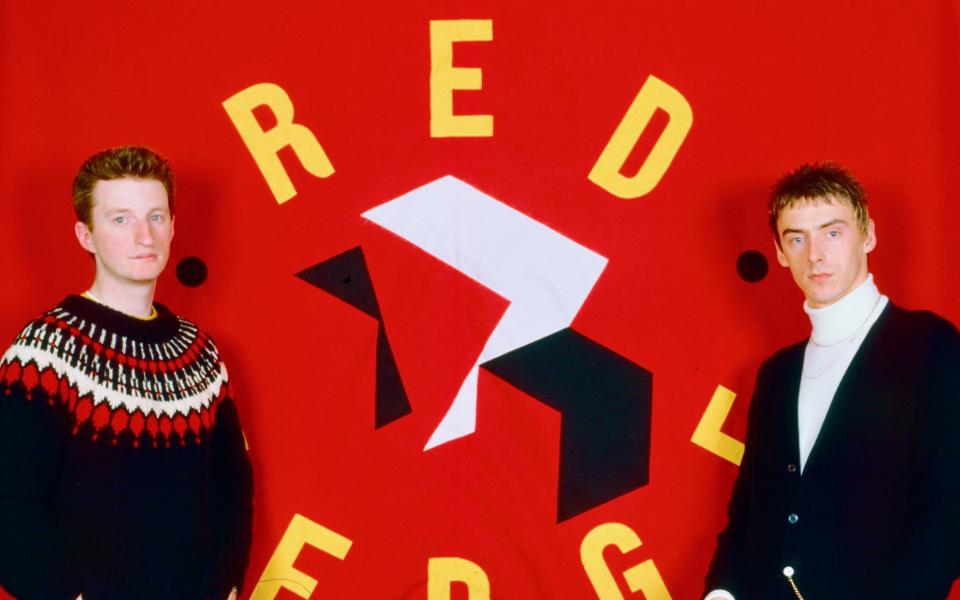
All of which makes Red Wedge seem like a fable from the Old Testament. Despite the rank unpopularity of the Conservatives, particularly in the eyes of young voters, it seems inconceivable that chart-hogging music-makers of 2023 would mobilise in the name of the Labour Party. It’s just not the done thing any more. Even Jeremy Corbyn struggled to capitalise on his popularity with first and second-time voters. His 2018 Labour Live festival drew only 4,000-people to a site in Tottenham capable of accommodating five times that number. The Workers’ Beer Company reportedly refused to get involved, for fear they wouldn’t recoup their costs.
Of course, the Left has a long and noble tradition of being unable to stage p___-ups in breweries. “The Labour Party was terribly disorganised and near bankrupt,” was how one insider explained the situation in 1985. “They were living on overdraft. There were times when the staff didn’t get paid for a day or two because bank payments didn’t go through.”
With an eye on the four-million young people who would reach the age of majority by the time of the next election in 1987, Red Wedge went to work. Planning meetings were held at Labour’s headquarters on the Walworth Road, in South London, and, in the space of barely 18-months, the nascent movement had spawned nationwide tours by musicians and comedians, a tour with an all-female line-up, an alternative election manifesto (Move On Up: A Socialist Vision of the Future) as well as a magazine, Well Red. One notable campaign poster featured a picture of the Prime Minister, alone, alongside the slogan “there’s only one loony left”.
For it was she, of course, who most unified this otherwise disparate band of travellers. “If Red Wedge could be defined as anything,” explained Billy Bragg, “it was a collection of artists who opposed Margaret Thatcher.” At the official launch, on the House of Commons terrace in November 1985, a telegram was read from the singer Sade, on tour in the US, which declared, “If we shed a tear for all the sorrow she’s caused, we’d drown.” Paul Weller was less poetic. “Thatcher was a tyrant, a dictator – I think she should have been lined up against a wall and shot,” he said.
Describing themselves as being for rather than of the Labour Party, the troops were not always enamoured of their own side, either. At the start of the very first meeting on the Walworth Road, a chairperson’s opening remark that “we understand you’re all here to help the Labour Party” was met with the rejoinder, again from Weller, that leader Neil Kinnock “didn’t do much for the miners” during the bitter nationwide strike of 1984-85. At the end of a brief but gravid silence, the chair admitted that “it was a very difficult time for all of us”.
It still was. But while the leadership’s pallid support for the National Union of Mineworkers during the most polarising industrial dispute in living memory had rendered Labour vulnerable on its left flank, at least their new youth movement would prove impervious to infiltration from hard-line ideologues and entryists such as the Socialist Workers’ Party and Militant Tendency. As political co-ordinator Paul Bower explained, “One of the joys of Red Wedge was there wasn’t any real structure, which used to drive Militant mad. You couldn’t take it over because it was too anarchic.”
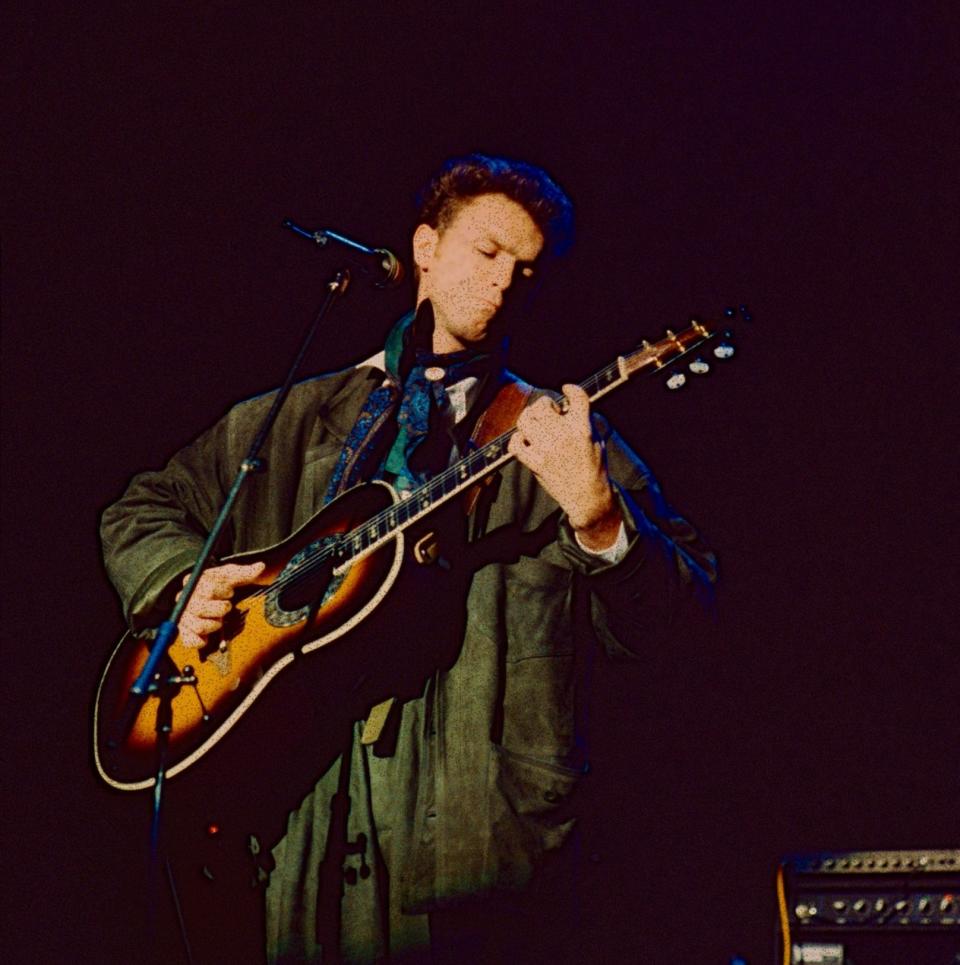
It wasn’t above having fun, either – fun being a quality with which Labour was not at the time intimately associated. During one press conference, Bower explained to the nation’s media that the influence of Red Wedge had grown to the point where, come the next general election, the party would be issuing a cassette titled Now That’s What I Call Socialism, Volume 3 rather than a written manifesto. The more credulous members of the Fifth Estate wrote down his words verbatim.
They wrote other things, too. As the inaugural six-date Red Wedge Tour prepared to hit the road, Sun reporter Garry Bushell revivified a seven-year old story about an erstwhile friendship between Suggs, the singer with Madness (who were scheduled to appear on some of the dates) and Ian Stuart Donaldson, bandleader with Skrewdriver, who in 1982 (three-years after the pair last spoke) had swapped vanilla-punk for white supremacism. “Madness Leftie Teamed Up With Race-Hate Thug” read the front-page headline. That Bushell himself had once issued a skinhead compilation album titled Strength Through Oi! – a play on the Nazi slogan Strength Through Joy – wasn’t mentioned.
Over at the New Musical Express, Rottweiler-in-residence Steven Wells smelled a rat. “Although pop-stars have long been regarded as legitimate front-page fodder, Madness, whose last single died a death at [number] 35 in the Gallup charts, are far from newsworthy at the moment. ‘It’s not as if they’re Wham!’ said a Fleet Street journalist I spoke to…. This, combined with the fact that Bushell had written the article two weeks before it was published, (surely not standard practice for the lead story of a national newspaper?) could suggest it was a calculated smear against Suggs because of his Red Wedge connections.”
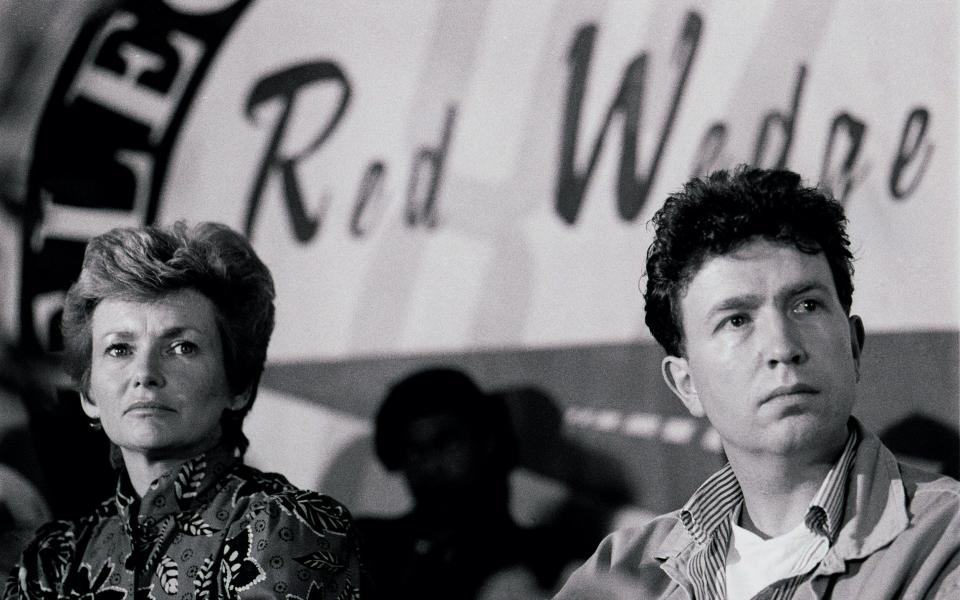
Unbowed, on January 24 1986 the touring party boarded a Len Wright 52-seat coach outside the Hilton hotel, hard by Kensington Gardens, for their six-date tour of theatre-sized venues in Manchester, Cardiff, Leicester, Bradford, Edinburgh and Newcastle. Joining the formal line-up of The Style Council, Billy Bragg, The Communards, reggae MC Lorna Gee, soul singer Junior Giscombe and between-sets DJ Jerry Dammers were guest artists such as The Smiths, Tom Robinson, Lloyd Cole & The Commotions and, of course, Madness and Gary Kemp. Thanks to eve-of-tour front covers in both the NME and Melody Maker, the artists played to full houses in every city. Each night, the show culminated with a collective sing-a-long of the Curtis Mayfield soul standard Move On Up.
“In our minds, this was a Motown Revue. [Us] on a bus, travelling around – the vibe was incredible,” was how Bragg described the caravan to the author Daniel Rachel. On the coach, the musicians wrote and performed rude songs about each other. Weller canoodled with backing singer Dee C Lee, who he would later marry. Jerry Dammers played dance music from a boom-box. “[But] this wasn’t some lefty pop-star club,” Bragg was keen to emphasise. “We didn’t all hang out at the Groucho. We had all met on benefits [gigs] before and during the Miners’ Strike.”
Despite financing the tour’s logistics – hotels, road crew, travel expenses – out of his own pocket, it was Paul Weller who remained its most uncertain participant throughout. “There were only two alternatives as far as I see it,” he would later say in Walls Come Tumbling Down. “One was armed revolution and the other [was] the ballot box. An armed revolution isn’t that easy to organize, is it? Not in this country, anyway. So I guess you have to try it the other way – the supposedly democratic way.”
Which was often messy. Prior to each night’s concert, the performers appeared at public events with politicians who Weller described as being “more showbiz than the groups”. At one afternoon happening in Newcastle, the promise of live music made by the Militant Young Socialists group – without the knowledge, let alone the authority, of anyone involved with Red Wedge – led to heated scenes from a 600-strong crowd that were ameliorated only by the appearance of Elvis Costello, who had been summoned from rehearsals for the music programme The Tube at nearby Tyne Tees Studios.
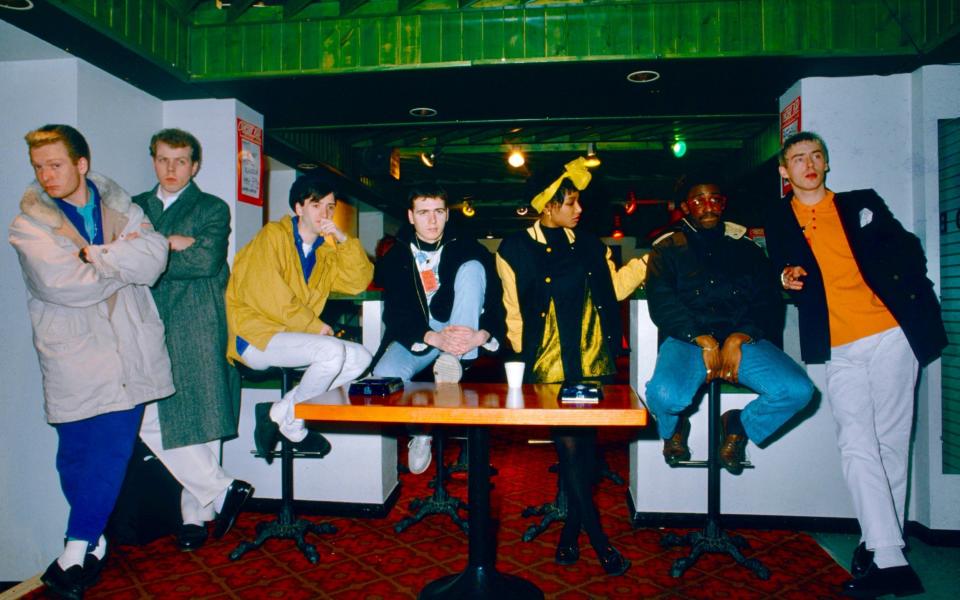
“[We] begged him to come down to the Riverside and he said yes,” recalled a club employee. “When he arrived he asked for a pint of lager, a pint of orange juice and a guitar. And then he went onstage and said to the audience, ‘I don’t know where the f___ the others are’, and started playing a wonderful rendition of Shipbuilding… He played for about 40-minutes.”
Despite Elvis Costello declining the invitation to join Red Wedge – as the author of lyrics such as “they’re so tired of shooting protest singers that they hardly mention us,” he was always too cute for their scene – the two parties were hardly divided on the decade’s most divisive figure. “The things that [Margaret Thatcher] visited on society as a whole, we’ll never recover from; the dismantling of this society… was truly wicked and evil – it was beyond politics and into morality,” Costello would later say. As if anyone could stop her.
At least by the time the Conservatives announced a date for the general election – June 11, 1987 – the Big Red Wedge Machine was sufficiently supple as to be able to orchestrate a 28-date tour that saw a variety of performers pressing the flesh in no fewer than 50-marginal constituencies. On the day before the polls opened, the NME obligingly placed Neil Kinnock on its front cover. But, really, the momentum was illusory; Kinnock later said that he never expected to win. Despite the hothouse atmosphere at Walworth Road, it wasn’t even true that everyone in the creative industries supported Labour. As Billy Bragg drolly put it, “If they threw all the Tory voters out of the charts… there wouldn’t be many [people] left”.
As Team Red Wedge gathered at the Mean Fiddler club, in Harlesden, to watch the general election results late into the night, the realisation dawned that a third consecutive victory, this time with a majority of 102-seats, would keep the Conservatives in power until the 1990s. In the light of yet another pummelling defeat for the Labour Party, the fact that the opposition’s share of the youth vote (18-to-24 year olds) had increased by 7 per cent seemed like frigid comfort.
Certainly, it was hard not to be despondent. Speaking to the music magazine Q, Paul Weller would later admit that he “felt uneasy about getting involved [in Red Wedge] but did, and did the best I could. I thought we were exploited by the Labour Party… I should have stuck with my original instincts… Before the Wedge, the Style Council had done a lot independently and raised a lot of money in benefits. But after the Wedge, we were all so disillusioned it all stopped. We were totally cynical about all of it.”
With this kind of disappointment in the air, it was perhaps inevitable that the movement’s flame would dim in the wake of the general election of 1987. As a forlorn Billy Bragg walked home to his flat in Acton, West London, in the early hours of June 12, he looked at strangers on the streets and thought, “How could you have done that?” The next night he appeared as a guest on the late-night Channel 4 discussion programme After Dark. During a commercial break, the newly elected Tory MP for Billericay, Teresa Gorman, leaned across the table and whispered, “You and your kind are finished. We are the future.”
This time, though, a Tory had called it wrong. Because 36-years later, on Saturday September 11 2023, Billy Bragg was honoured with a star on the Music Walk of Fame in Camden Town. Later that day, while performing a set on a pop-up stage on Hawley Crescent, the now 65-year old spoke of his days as a member of Red Wedge. “And here I am,” he said, “still playing the same bloody songs.”

